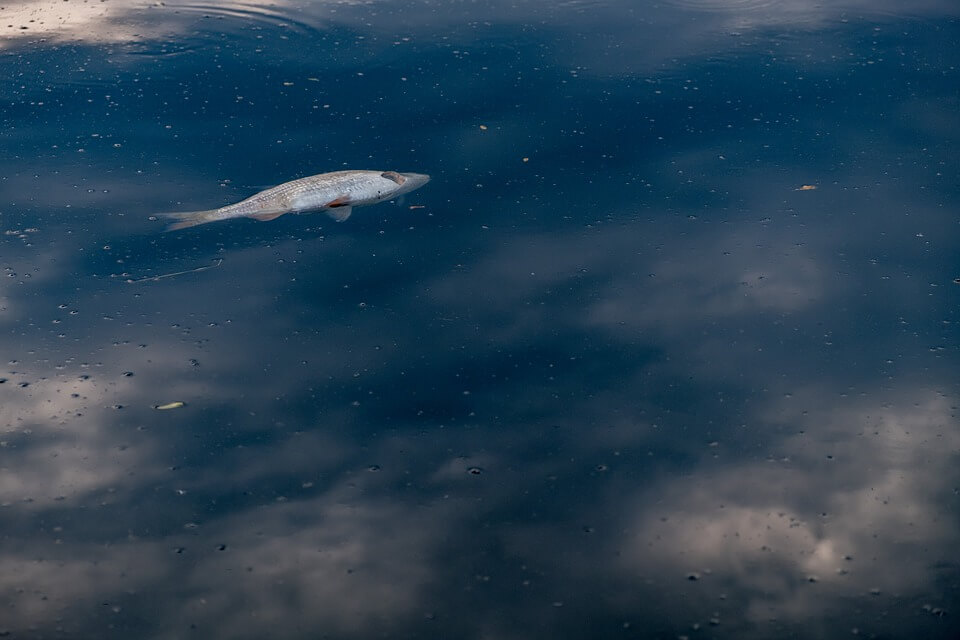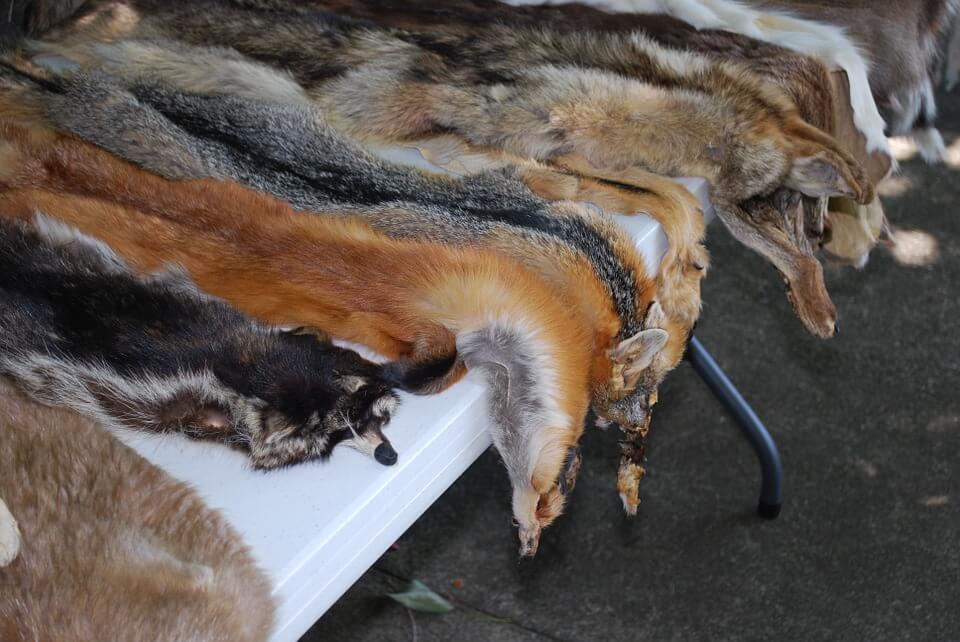Water pollution
Each mink skinned by fur farmers produces about 18 kg of faeces in his or her lifetime. That adds up to millions of kilograms of faeces produced annually by US mink farms alone. When a Washington state mink farm was charged with polluting a nearby creek in 2013, the faecal coliform levels in the water were as much as 240 times higher than the legal limit. Over the span of five years, studies of lakes and rivers in Nova Scotia found “degradation in water quality to be primarily a result of high phosphorus inputs resulting from releases emanating from mink farming operations”.

Chemicals and health risks
Once animals have been slaughtered and skinned, their fur is treated with a soup of toxic chemicals to “convert the putrefactive raw skin into a durable material” (i.e. to keep it from rotting in the buyer’s wardrobe). Various salts – along with ammonia, formaldehyde, hydrogen peroxide, and other chromates and bleaching agents – are used to preserve and dye fur. Fur is no longer biodegradable once this chemical treatment has been applied.
Toxins in fur can be absorbed through the skin and remain in the human body for more than 20 years, causing chronic health issues. Research in Germany, Italy, and the Netherlands has shown significant quantities of toxic chemicals – including high levels of formaldehyde and ethoxylates – in fur trim on children’s clothing by the brands Canada Goose, Dolce & Gabbana, Woolrich, and Nickelson.
The environmental impact of farmed-fur production is compounded when all aspects are considered: transporting feed to animals; removing animals’ waste; supplying electricity for farms, the slaughter process, and other operations; applying pesticides, vaccines, and antibiotics; transporting carcasses; transporting pelts to auction; transporting pelts to a fur tannery, where they are sorted, soaked, fleshed, tanned, wrung, dried, cleaned, trimmed, buffed, and finished; and transporting tanned pelts to a garmentmaker, a wholesaler, and so on.
When all these processes are taken into account, the negative environmental impact of producing a fur garment can be up to 10 times higher than that of making a faux-fur one.






